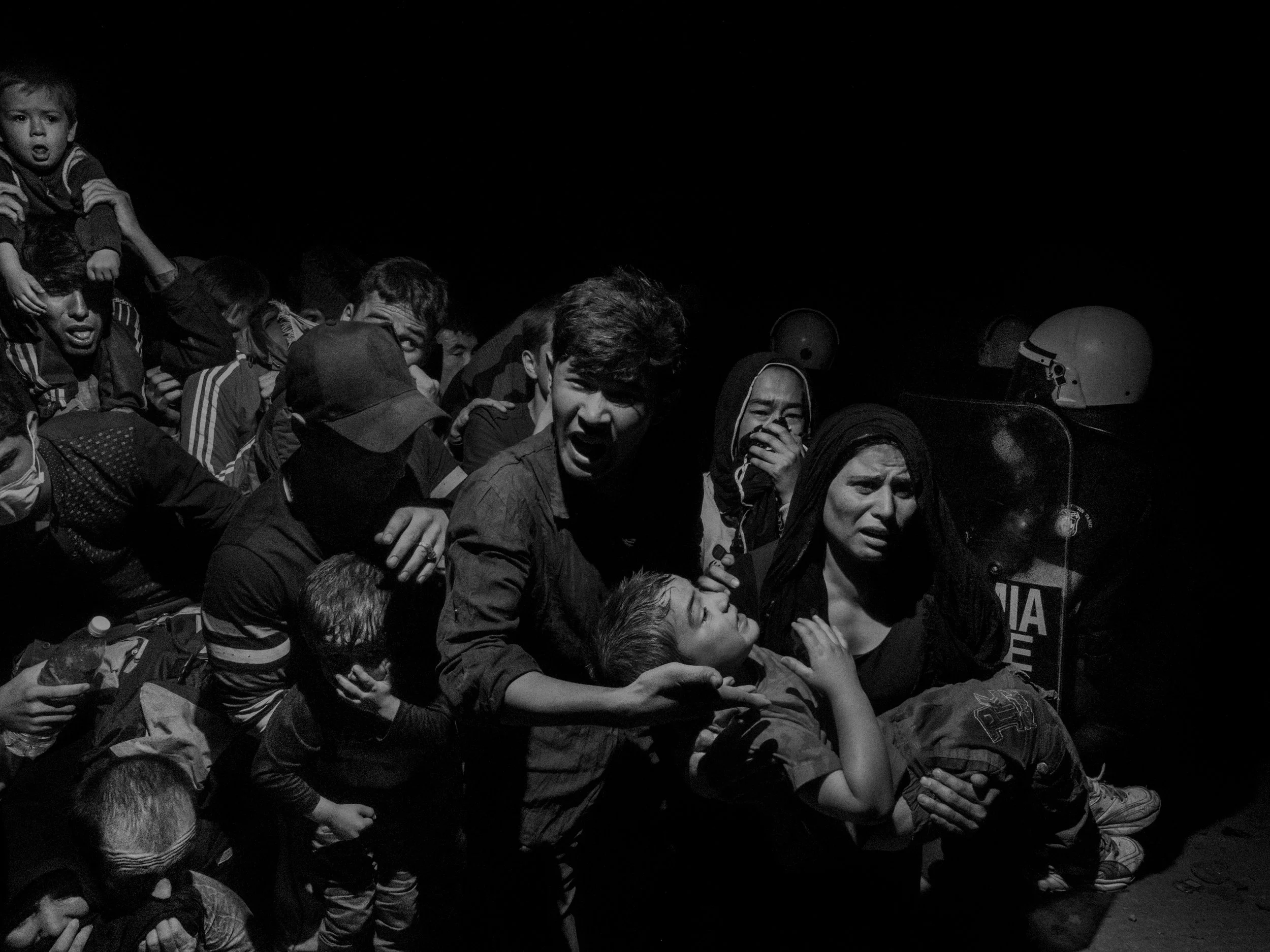Current Feature: Alex Majoli
Scene #0525, Pointe Noire, Congo 3/5, 2013.
MUSÉE: What compels you to document conflicts?
Alex Majoli: It is true that I have found myself in conflict zones with a camera, but this is not what my work is all about. I can say that, in the past, one of the things that pushed me to document conflicts was the exploration of human nature in situations that really push human boundaries. In times of extreme emotions, all the masks that we build for ourselves are gone. However, conflict documentation has only made up a small percent of my work. For the past 10 years I have dedicated my efforts almost exclusively to SKENE.
Alex Majoli, Scene #60410, Lesbos, Greece 2/5, 2015
MUSÉE: While you do photograph individuals who have experienced violence and instances of violence itself, you also tend to photograph objects that contain evidence of violence. What role do objects play in your work?
Alex: Traces of violence can be found anywhere if that is what you are looking for; it is all about perception. For example, I would describe the way society tries to determine our lives as violent. Sometimes the state of an object, its position and its purpose, can tell you a lot about the place it was found or the person who owned it. That object has been through a journey and carries every detail of it. Its meaning is far greater than its material reality.
MUSÉE: Can you tell us about the experience of shooting in the midst of combat? Do you think the camera serves as armor for you as you put yourself in these physically and emotionally dangerous positions?
Alex: No, unfortunately there is no armor. A camera cannot protect your emotions no matter what meaning you project onto the camera.
Alex Majoli, Scene #20508, Lesbos, Greece 1/5, 2015.
MUSÉE: Throughout your career you have photographed cadavers, refugee camps, funerals, bombings, and other high intensity experiences. Would you agree that during these moments you become a kind of voyeur of pain and violence? How do you view your position as an onlooker?
Alex: Any moment you decide to take a photograph, you are voluntarily taking part in a scene. You cannot be a bystander if you are one of the characters involved. In any given situation, each person plays the role they choose for themselves.
MUSÉE: Do you think people pose or behave less candidly when they notice the camera? Given your interest in obscuring the line between reality and theatre, do you think subjects who do perform in the presence of a camera are still enacting reality?
Alex: There is an initial moment of hesitation from some people, which is the reason one photograph might take longer than usual. It takes time for people to accept their surroundings and fall back into their own character. Suddenly unaware of the camera, people are able to re-enact themselves with more conviction, making the scene more real, if not reality itself.
Alex Majoli, Scene #1095, Pointe Noire, Congo 4/5, 2013.
MUSÉE: You call your project Libera me “a reflection of the human condition.” It has three chapters, the first being called “Persona,” which consists of many faces illuminated in chiaroscuro. How do you think that the individual “persona” relates to the broad notions of paradise and hell which you represent, through images of nature and war, in the second and third chapters of Libera me?
Alex: This work is a re-interpretation, or better, a tribute to Dante’s Divine Comedy, an incredible masterpiece of the early Renaissance. The full body of work never achieved its full physical form, having stopped at chapter 1 when my publisher and friend, Gigi Giannuzzi, died in 2012. The photos in “Persona” are not staged portraits; they are people going about their daily lives, being themselves. Frozen. I took a lot of these pictures and the ones that I chose to use were the images that most conveyed a sense of limbo, of uncertainty. These images are an abstraction implanted in our own brains after centuries of marketing. Is the image of God really represented as an old man with a white beard? What brought Michelangelo to make that association in his head? And why has this been the norm for so many years since then?
Scene #50032, Lesbos, Greece, Migrants and refugees crowd around the food distribution van inside Moira refugee camp, 2015.
To read the full article from our Issue Humanity, visit here












